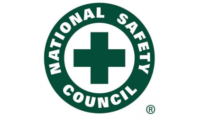Global OSH report:
Russia seeks improvement in occupational safety and health

 At the first All-Russian OSH Week last week, nearly 3,000 occupational safety and health practitioners, experts, scientists and private sector representatives from Russia and abroad discussed new trends and prospects for promoting safety and health at work, ensuring safe working conditions and protecting workers’ health.
At the first All-Russian OSH Week last week, nearly 3,000 occupational safety and health practitioners, experts, scientists and private sector representatives from Russia and abroad discussed new trends and prospects for promoting safety and health at work, ensuring safe working conditions and protecting workers’ health.
“We need to take urgent steps to reinforce our action and redouble our efforts to create safe and healthy workplaces for all workers,” said Sandra Polaska, Deputy Director-General for Policy for the International Labour Organization (ILO).
The challenge "remains enormous"
“Despite continuous efforts by the International Labour Organization and by many of our constituent governments, workers organizations and employers, the challenge of creating safe and healthy workplaces for all remains enormous.”
The ILO estimates that occupational accidents and work-related diseases cause over 6,300 deaths every day or 2.3 million fatalities a year. Of this huge loss, about 350,000 deaths are caused by occupational accidents and close to 2 million by work-related diseases.
Non-fatal accidents affect an even larger number – over 313 million workers are injured every year – while non-fatal work-related diseases are estimated to affect 160 million each year.
Not just emerging economies
“This is a devastating toll on the affected workers, their families, communities, employers and economies,” said Polaski. “And the accidents and diseases are not limited to low income or emerging economies—mining and other disasters and new and old occupational diseases continue to plague even high income countries.”
Polaski called on workers, employers and governments to work together to create effective OSH strategies at the national level.
What's needed
A successful OSH management system requires the commitment of top management to a culture of prevention, including through the allocation of sufficient resources. But just as important is the participation of workers, who play a critical role in recognizing and identifying hazards; contributing to well-informed and context specific risk assessment; planning effective preventive measures; and implementing prevention and mitigation measures.
“Effective occupational safety and health management systems at enterprises and workers full participation also make important contributions to better compliance with national legislation. Thus the promotion of OSH management systems and worker participation by government could be an important part of national OSH strategies for compliance assurance,” said Polaski.
“We know that adequate basic legal frameworks and regulations specifying minimum requirements are an essential foundation for achieving safe and healthy workplaces,” she added.
A final ingredient of an effective national OSH strategy is the effective linkage between prevention and employee injury insurance schemes.
“The goal of OSH strategy is to prevent workplace death, injury and disease. But when it happens, workers and their dependents must be supported and the ILO advocates for full extension of coverage of employee injury insurance to all workers,” she said.
OSH is moving up on the global agenda
According to Polaski, the importance of ensuring safe and healthy workplaces is moving up the global political agenda, but more work is required to make a culture of prevention on OSH a reality for all workers worldwide.
“We have the knowledge and the organizational and management tools to succeed. Success relies very much on the commitment and effort of people in every country, in each workplace,” she concluded.
Looking for a reprint of this article?
From high-res PDFs to custom plaques, order your copy today!









